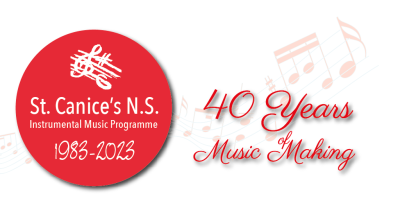In First Class budding Violin players may wish to continue their playing by taking part in our “Minims and Semibreves” or their Cello with first class Cellos. Some of our Violinists may also like to move over the Viola. Some may wish to take up the Recorder with “Petit Puffs of Wind”-a great introduction to other wind instruments which they may like to try once they get to third class. If numbers permit first class students can enjoy using the programme’s wide selection of percussion instruments by taking Junior Percussion lessons. If they are a singer now may be the time to enrol them in singing lessons. Perhaps they are interested in the Piano either? Most of our first class instrumentalists also benefit from enrolling in our Theory for Fun classes which augment and supplement their instrument learning.
Cello
The video shows Ella Brennan 6th Class 2013-2014 interviewed and performing in Senior Orchestra in the programme “Meet The Orchestra” recorded in May 2013 and aired on RTE Junior in September 2013
The cello (pronounced like ‘chello”) is the second largest member of the string family. Like the other string instruments, sound is produced by drawing a bow across the strings or by plucking the strings.
Like other string instruments the cello comes in just two pieces, the instrument and the bow. The bow uses horsehair or a synthetic material to vibrate the strings as it is drawn over the instrument. The cello has four stings which are normally tuned to a G, D, A and C. These are the same notes as a viola but are an octave lower.
The cello is played in an upright position with the left hand resting on the back of the neck and the right either plucks the strings or holds the bow. The player should be sitting with the body of the instrument resting between the legs.
The cello is a very old instrument. It has been basically unchanged for hundreds of years. Now, cellos come in various sizes. The correct size for each student depends on the overall size of the student. Students are measured by our cello teachers to determine the correct size of instrument for them as individuals.
The cello is not as popular as a violin for beginners. This means that a good cellist will always be a very valuable member of the orchestra since the number of cello players is so small. However, the cello is still used in many styles of music throughout the world. It is well known for its use in symphony orchestras and occasionally performs in popular music groups as well.
St Canice’s cellists perform in the Junior orchestra and Senior orchestra and may also get together with fellow woodwind, string or brass players to form quartets or other smaller performing groups.
